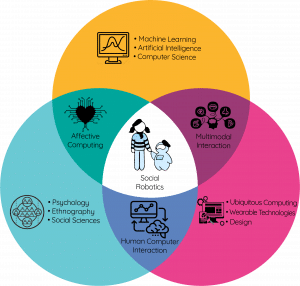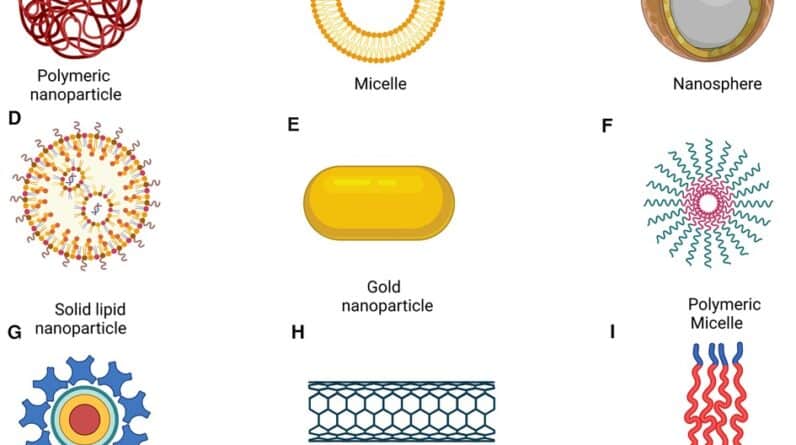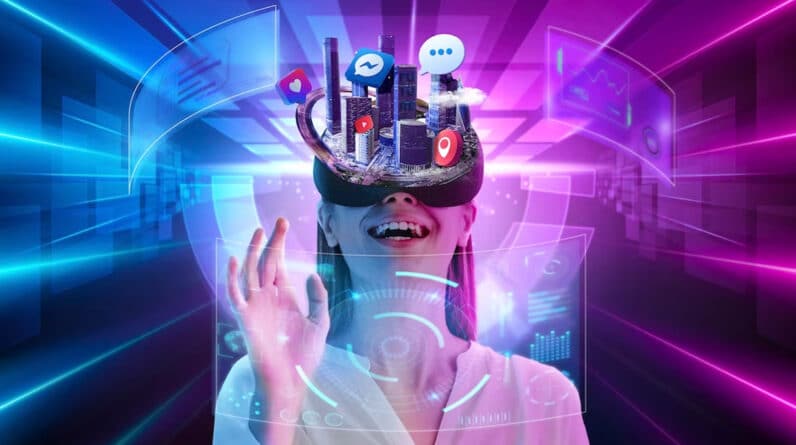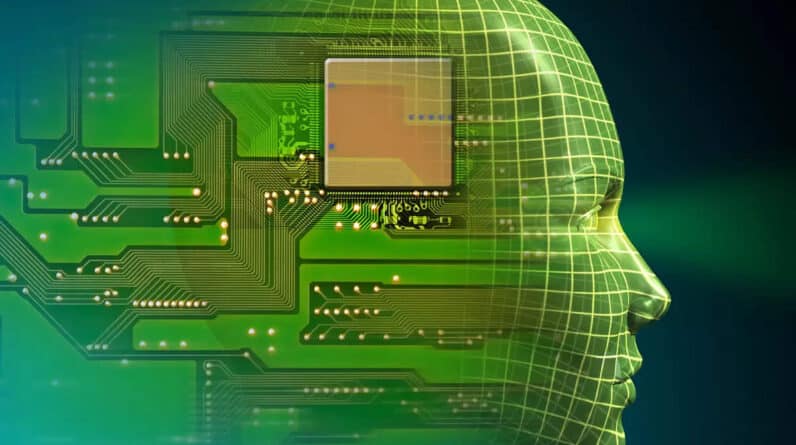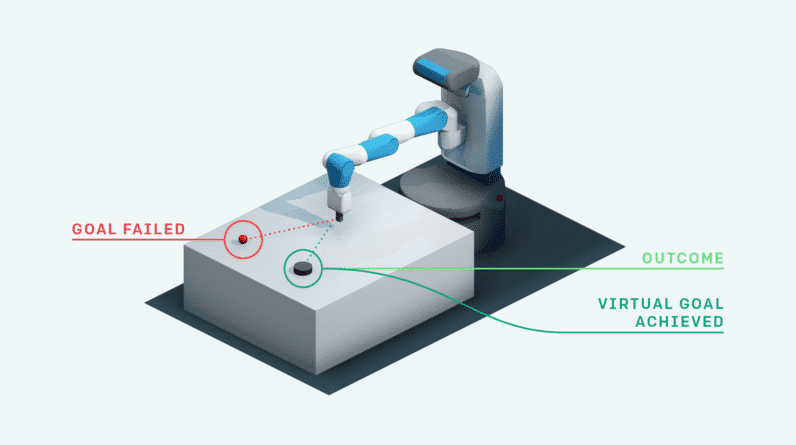In the world of technology, the convergence of Artificial Intelligence (AI) and the Internet of Things (IoT) has created a powerful and dynamic union. AI, with its ability to analyze vast amounts of data and make predictions, has found a natural partner in the IoT, which connects an endless array of devices and sensors. Together, they have the potential to revolutionize industries, improve efficiency, and enhance our everyday lives. This article explores the synergies between AI and IoT, unveiling the exciting possibilities that arise from this collaboration.

AI and IoT Overview
Artificial Intelligence (AI) and the Internet of Things (IoT) are two cutting-edge technologies that are revolutionizing various industries. Both AI and IoT have their own unique capabilities and characteristics, but when combined, they create a powerful synergy that can drive unprecedented growth and innovation.
Definition of AI
AI refers to the simulation of human intelligence in machines that are programmed to think and learn like humans. It encompasses various subfields, such as machine learning, natural language processing, computer vision, and more. AI enables machines to analyze data, recognize patterns, make informed decisions, and perform tasks that typically require human intelligence.
Definition of IoT
The Internet of Things (IoT) refers to the network of physical devices, vehicles, home appliances, and other objects embedded with sensors, software, and connectivity, enabling them to collect and exchange data. IoT allows these “things” to be remotely monitored, controlled, and connected to each other and the internet, creating a vast ecosystem of interconnected devices.
Introduction to the synergy between AI and IoT
When AI and IoT are combined, they unlock a whole new realm of possibilities. The synergy between AI and IoT lies in the ability of AI to process and analyze massive amounts of data generated by IoT devices. AI algorithms can extract valuable insights from this data and enable IoT devices to make intelligent, autonomous decisions.
AI can enhance the capabilities of IoT devices by providing them with advanced analytics, deep learning, and predictive capabilities. This synergy opens up opportunities for automation, efficiency, and improved decision-making in various industries, ranging from smart homes and healthcare to transportation and retail. Let’s explore some of the applications of AI in IoT.
Applications of AI in IoT
Smart Homes
AI-powered smart home devices have become increasingly popular in recent years. These devices, such as voice assistants and smart thermostats, leverage AI algorithms to understand your preferences and automate various tasks. For example, they can adjust the temperature, turn on lights, play music, and even anticipate your needs based on past behavior and data analysis.
Industrial IoT
AI in industrial IoT is revolutionizing the manufacturing landscape by enabling predictive maintenance, optimizing production processes, and improving overall efficiency. AI-powered sensors and analytics systems can monitor equipment health, detect anomalies, and predict failures, allowing for preventive maintenance and minimizing downtime. This results in cost savings, increased productivity, and improved safety in industrial settings.
Healthcare
AI and IoT are transforming the healthcare industry by enabling remote patient monitoring, smart diagnostics, and personalized treatment. IoT devices, such as wearables, can collect real-time data about patients’ vital signs, activity levels, and medication adherence. AI algorithms can analyze this data and provide valuable insights to healthcare professionals, helping them make accurate diagnoses, detect early signs of diseases, and create personalized treatment plans.
Transportation
AI and IoT are driving innovations in transportation, making vehicles smarter, safer, and more efficient. Connected cars equipped with AI technologies can collect and analyze data from various sensors, including GPS, cameras, and radar systems. This enables features like adaptive cruise control, lane departure warning, and collision avoidance. AI-powered transportation systems also offer optimized routes, traffic management, and autonomous capabilities, leading to reduced congestion and improved overall transportation efficiency.
Retail
AI and IoT are reshaping the retail industry by providing personalized customer experiences, optimizing inventory management, and improving operational efficiency. IoT-enabled devices, such as beacons and smart shelves, can collect data about customer behavior and product performance. AI algorithms can then analyze this data to create personalized marketing campaigns, recommend products, and optimize supply chain processes. This leads to better customer satisfaction, increased sales, and reduced costs.

Benefits of AI in IoT
Improved Efficiency
The integration of AI in IoT devices leads to improved efficiency across various domains. AI algorithms can automate routine tasks, analyze data in real-time, and optimize processes. This results in reduced human effort, increased productivity, and cost savings.
Enhanced Decision-making
AI empowers IoT devices with advanced analytics and decision-making capabilities. By analyzing vast amounts of data, AI algorithms can identify patterns, predict outcomes, and make informed decisions. This enables IoT devices to respond intelligently to changing conditions and optimize their functions accordingly.
Predictive Maintenance
The combination of AI and IoT enables predictive maintenance in industrial settings. By collecting data from sensors embedded in equipment, AI algorithms can detect anomalies, predict failures, and schedule maintenance tasks in advance. This proactive approach reduces downtime, extends equipment lifespan, and improves overall operational efficiency.
Real-time Insights
AI in IoT devices enables real-time data analysis and insights generation. This allows organizations to monitor and respond to events as they happen, uncover trends and patterns, and make informed decisions in a timely manner. Real-time insights empower businesses to address challenges, seize opportunities, and stay competitive in a rapidly changing environment.
Personalization
The synergy between AI and IoT enables personalized experiences for users. By analyzing user data and preferences, AI algorithms can create personalized recommendations, tailor services, and anticipate users’ needs. This leads to higher customer satisfaction, increased engagement, and ultimately, improved business outcomes.
Challenges and Limitations of AI in IoT
While the synergy between AI and IoT holds immense potential, there are several challenges and limitations that need to be addressed.
Data Privacy and Security
The increased connectivity and data exchange in IoT devices raise concerns about data privacy and security. AI-powered IoT devices collect and transmit sensitive data, making them potential targets for cyberattacks and privacy breaches. It is crucial to implement robust security measures, encryption protocols, and user consent frameworks to protect personal data and ensure user trust in AI and IoT technologies.
Lack of Standardization
The lack of standardization in AI and IoT poses interoperability challenges. With numerous vendors and platforms, there is a need for common protocols and standards to enable seamless integration and data exchange between different IoT devices and AI systems. Standardization initiatives are essential to foster collaboration, innovation, and widespread adoption of AI and IoT technologies.
Scalability
As the number of connected devices in IoT continues to grow, scalability becomes a significant challenge. AI algorithms need to handle and process massive amounts of data from diverse devices and sources. Ensuring the scalability of AI systems to handle this exponential growth is crucial to avoid system failures, latency issues, and performance bottlenecks.
Interoperability
Interoperability is a key challenge when integrating AI and IoT systems. Different devices, protocols, and platforms may not be compatible, leading to data fragmentation and integration difficulties. Addressing interoperability challenges requires standardization and the development of middleware solutions that can facilitate seamless integration and data exchange between various AI and IoT systems.
Ethical Concerns
The increasing role of AI in IoT raises ethical concerns around issues such as bias, privacy, and job displacement. AI algorithms can unintentionally perpetuate biases present in training data, which can lead to discriminatory outcomes. Ensuring fairness, transparency, and accountability in AI systems is crucial. Additionally, the potential for job displacement due to automation requires proactive measures for reskilling and upskilling the workforce.
AI Technologies in IoT
AI encompasses various technologies and subfields that are instrumental in enhancing IoT capabilities. Some of the key AI technologies used in IoT include:
Machine Learning
Machine learning enables IoT devices to learn from data and improve their performance without being explicitly programmed. It allows IoT devices to recognize patterns, make predictions, and adapt their behavior based on data analysis.
Deep Learning
Deep learning is a subset of machine learning that focuses on training neural networks with multiple layers to extract complex patterns and representations from data. Deep learning algorithms are used in IoT for tasks such as image and speech recognition, natural language processing, and anomaly detection.
Natural Language Processing
Natural Language Processing (NLP) enables IoT devices to understand and interact with humans through spoken or written language. NLP algorithms are used in voice assistants, chatbots, and other conversational AI systems, enabling seamless human-machine interactions in IoT applications.
Computer Vision
Computer vision enables IoT devices to analyze and interpret visual data from cameras and other imaging devices. It enables tasks such as object recognition, image classification, and video analytics. Computer vision plays a crucial role in applications like surveillance, autonomous vehicles, and smart healthcare.
Reinforcement Learning
Reinforcement learning is a branch of AI that enables IoT devices to learn optimal behavior by trial and error, through interaction with their environment. It is used in IoT applications like robotics, autonomous systems, and industrial automation, where devices can learn to make decisions and take actions to maximize rewards or minimize penalties.
Data Analytics in AI and IoT
Data analytics is at the core of AI and IoT integration. It involves several stages that enable the extraction of valuable insights from the vast amounts of data generated by IoT devices.
Data Collection and Storage
IoT devices generate massive amounts of data that need to be efficiently collected and stored. Data collection involves capturing sensor readings, user inputs, and other relevant data from IoT devices. This data is then stored in databases or cloud platforms, ensuring accessibility and scalability.
Data Preprocessing
Data preprocessing involves cleaning, transforming, and preparing the data for analysis. This includes removing noise, handling missing values, normalizing data, and performing feature engineering. Data preprocessing ensures that the data is in a suitable format for AI algorithms to extract meaningful insights.
Data Analysis
Data analysis involves applying various AI techniques to extract insights and discover patterns from the collected data. This can include applying machine learning algorithms, statistical analysis, and exploratory data analysis. The goal is to uncover trends, correlations, and actionable insights that can drive informed decision-making.
Data Visualization
Data visualization plays a crucial role in presenting the analyzed data in a visual format. Visualizations, such as charts, graphs, and dashboards, enhance the understanding of complex data and enable stakeholders to interpret and communicate insights effectively. Data visualization empowers decision-makers to identify patterns, spot anomalies, and derive actionable intelligence.
Data-driven Decision Making
The ultimate goal of data analytics in AI and IoT is to enable data-driven decision-making. By analyzing the data generated by IoT devices, organizations can make informed decisions, optimize processes, and deliver personalized experiences. Data-driven decision-making enables businesses to gain a competitive advantage, improve operational efficiency, and drive innovation.

AI-based Solutions for IoT Challenges
To address the challenges and limitations of AI in IoT, several solutions and initiatives are being developed and implemented.
Security and Privacy Solutions
To address data privacy and security concerns in AI and IoT, organizations are implementing robust security measures, encryption protocols, and access control mechanisms. Privacy by design principles and frameworks are being adopted to ensure the protection of personal data. AI algorithms are also being developed to detect anomalies and potential cyber threats in real-time, enhancing the overall security of IoT systems.
Standardization Initiatives
Standardization initiatives are underway to address the lack of interoperability in AI and IoT systems. These initiatives aim to develop common protocols, frameworks, and architectures that enable seamless integration and data exchange between diverse IoT devices and AI platforms. Standardization fosters collaboration, encourages innovation, and accelerates the adoption of AI and IoT technologies.
Scalability Solutions
To tackle scalability challenges in AI and IoT, organizations are leveraging cloud computing and edge computing technologies. Cloud platforms provide the necessary infrastructure and resources to handle large-scale data processing and analytics. Edge computing brings AI capabilities closer to IoT devices, reducing latency and improving real-time decision-making. Scalability solutions ensure that AI and IoT systems can handle the exponential growth of connected devices and data.
Interoperability Solutions
To promote interoperability between different AI and IoT systems, middleware solutions are being developed. These middleware platforms enable seamless integration and data exchange between devices, protocols, and platforms. They ensure compatibility between diverse IoT devices and AI algorithms, simplifying the development and deployment of AI-powered IoT solutions.
Ethical Frameworks
To address the ethical concerns associated with AI and IoT, organizations are establishing ethical frameworks and guidelines. These frameworks promote transparency, fairness, and accountability in AI systems, ensuring that they do not perpetuate biases or compromise privacy. Additionally, proactive measures are being taken to mitigate job displacement by focusing on reskilling and upskilling the workforce to match the changing demands of AI and IoT technologies.
Future Trends and Developments
The future of AI and IoT holds exciting possibilities and advancements. Some of the trends and developments that we can expect include:
Edge AI and IoT
Edge AI brings AI capabilities closer to the source of data generation, reducing the need for continuous data transmission to centralized cloud platforms. This enables faster response times, reduced latency, and improved privacy. Edge AI will play a crucial role in real-time data analysis, autonomous systems, and mission-critical IoT applications.
AI-powered Edge Computing
The combination of AI and edge computing will enable AI algorithms to run directly on edge devices, eliminating the need for constant connectivity to the cloud. This will lead to reduced bandwidth requirements, faster decision-making, and enhanced privacy. AI-powered edge computing will accelerate the deployment of intelligent applications in smart cities, smart homes, and industrial automation.
Federated Learning in IoT
Federated learning allows AI models to be trained on data distributed across multiple IoT devices, without the need to transfer sensitive data to a central server. This approach enhances data privacy while enabling collaborative learning. Federated learning will play a crucial role in applications that require data sharing while ensuring privacy, such as healthcare and smart grids.
Advancements in AI Chipsets
Advancements in AI chipsets and hardware will enable more efficient and powerful AI processing at the edge. Smaller, faster, and more energy-efficient AI chips will enable real-time analytics, on-device AI inferencing, and improved performance in resource-constrained IoT devices. AI chipsets will drive the proliferation of AI-powered IoT devices in various sectors.
Autonomous IoT Systems
The convergence of AI and IoT will lead to the development of autonomous IoT systems. These systems will be able to independently perceive, decide, and act based on their environment and data inputs. Autonomous IoT systems will be capable of making intelligent decisions, adapting to changing conditions, and optimizing their operations without human intervention.

Case Studies
To further illustrate the practical applications of AI in IoT, let’s examine a few case studies:
Smart Home Automation
In smart home automation, AI enables devices to understand user preferences and automate tasks. For example, an AI-powered voice assistant can control the temperature, lighting, and entertainment systems based on voice commands. Machine learning algorithms can learn from user behavior to anticipate and automate daily routines, enhancing comfort, convenience, and energy efficiency in smart homes.
Smart Healthcare
In smart healthcare, AI and IoT enable remote patient monitoring and personalized care. IoT devices, such as wearables and sensors, collect real-time data about patients’ vital signs, activity levels, and medication adherence. AI algorithms analyze this data to identify patterns, detect anomalies, and provide personalized insights to healthcare professionals. This enables early detection of diseases, remote diagnosis, and personalized treatment plans.
Smart Manufacturing
In smart manufacturing, AI and IoT improve production processes and enable predictive maintenance. Sensors embedded in manufacturing equipment collect data about performance, temperature, and vibrations. AI algorithms analyze this data to identify anomalies, predict failures, and schedule maintenance tasks. This proactive approach reduces downtime, optimizes equipment performance, and ensures efficient production processes.
Smart City
In smart city applications, AI and IoT enable efficient resource management and enhanced quality of life for citizens. Connected sensors and devices collect data about traffic patterns, air quality, waste management, and energy consumption. AI algorithms analyze this data to optimize traffic flows, improve waste collection routes, and reduce energy consumption. Smart city solutions enhance sustainability, optimize resource allocation, and enable better urban planning.
Conclusion
The synergy between AI and IoT is propelling technological advancements and transforming various industries. From smart homes and healthcare to industrial IoT and retail, the integration of AI in IoT devices is driving automation, efficiency, and improved decision-making. While there are challenges and ethical considerations to address, AI and IoT hold immense potential to create a more connected, intelligent, and sustainable future. As advancements in AI technologies, data analytics, and edge computing continue to evolve, we can expect even more innovative applications and capabilities in the realm of AI and IoT.

